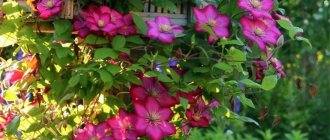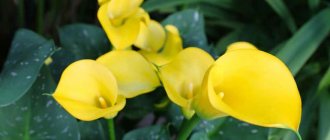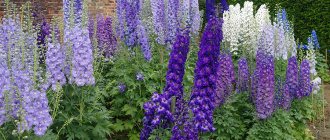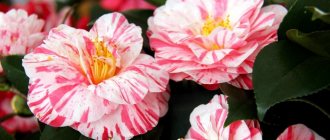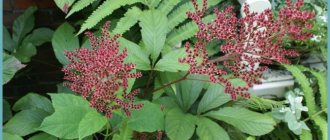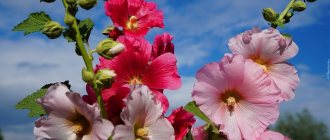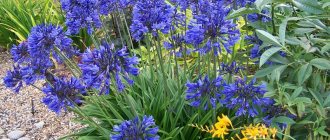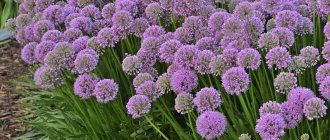People cultivate flowers for their beauty and pleasant aroma, which is difficult to forget. At the same time, the plants do not require special care. Usually, mineral fertilizers, water, sunlight and some soil manipulation are enough. Possessing a tart, fragrant scent, lavender has become one of the favorite incense in the East. It is impossible to imagine the mountain slopes of Southern and Central Europe without it. The plant also found its way into gardens. Certain varieties are grown almost all over the world. To get flowers of the desired shape and color, you need to understand lavender varieties, planting and care. In exchange for your efforts, you will receive the main decoration for your garden. Lavender will suit almost any garden, and sometimes it can be used to form rich rows - a full-fledged garden from one plant. Bushes are also used in landscape design. They decorate rockeries, alpine slides and other compositions.
Features and description of the plant
Lavender is 47 species of perennial plants of the genus Lavender of the Lamiaceae family. People have developed several hybrids of the bush, and 47 natural varieties grow in Europe, India, Australia, northern and eastern Africa, the Canary Islands and the Arabian Peninsula. The plant has taken root on mountain slopes and plains: in temperate, subtropical and tropical climates. Easily tolerates exposure to scorching sun and lack of moisture. Mostly cultivated varieties are grown in gardens. During the ripening period, the bushes are covered with flowers of violet, purple and lilac shades. Lavender is used to improve the smell of clothes, and one of the leading chains of dry cleaners and laundries was even named after this flower. The plant is also used in perfumery, also due to its aromatic properties. The leaves and flowers are used to make tea, and in some European countries, ice cream.
Known species:
- lavender angustifolia;
- toothed;
- stehadskaya.
Shelter for the winter
In principle, lavender is frost-resistant and can withstand temperatures down to -25°C, so in the southern regions of our country they simply cover it with snow to be on the safe side. But lavender growing in the Urals and in the middle zone will have to be insulated with spruce branches, and covered on top with a plywood box with a load from the wind on top. Do not use fallen leaves, peat and straw for insulation - the bushes will rot and rot.
In mid-March, next year, do not forget to release the lavender from its winter shelter so that it can enjoy the sun and fresh air.
Beneficial properties of lavender and use in folk medicine
In addition to its decorative qualities and pleasant aroma, the plant has about two dozen other useful features. In the USA, for example, it is used as a seasoning. Around the world, lavender is added to drinks to enhance the scent. Essential oils are used to make products from the soap, cosmetic and perfume industries. In folk medicine, lavender is known as a remedy for bruises and burns. It is also used as an antibiotic, antispasmodic for headaches and stomach colic. The plant has a relaxing effect on the nervous system. Lavender is used to treat flu, laryngitis, tonsillitis and sore throat. It lowers the temperature and dilutes the bile. The reason for taking lavender and preparations containing it is fatigue and stress - the plant has a general strengthening effect. Additionally, sleep improves. Lavender is taken to relieve nausea while traveling.
Lavender fairy tale
Evergreen lavender is a small bush in which small flowers are collected in spikes. You can see its beautiful blooms at the end of summer - at this time the garden turns purple, white, lilac or blue.
Lavender loves sunlight, warmth and moisture. But at the same time it is quite resistant to cold winter tests and is indiscriminate in soil types. In nature, it can be found in the mountainous areas of the Caucasus, Crimea or the coastal part of the Alps, as well as in southern Russia.
Lavender for landscape design is a whole topic for discussion. Thanks to its stunning flowering, it is used for landscaping large-scale garden plots and parks. But it will look no worse in more modest areas such as garden flower beds and alpine slides.
The decorative nature of lavender is one of its strengths
The main trump card of the heroine of our story is a deep, rich color that is noticeable from all points of the site. Waiting for the magical moment of flowering is not so difficult - lavender is unpretentious, starting from the moment of planting and further care. Rock gardens, rockeries, and various garden compositions are all excellent opportunities for using lavender.
If you want lavender to “work” all year round, purchase its narrow-leaved variety, which, in addition to beautiful blooms in summer, will delight you with beautiful gray-green foliage colors in winter.
To create a green lavender hedge, use several types of lavender for a varied and more attractive result. Lavender is also used as a background plant, and low-growing varieties allow you to create a real carpet where the flower shows all its colorfulness.
Main types and varieties
How crops are grown:
- French (broadleaf);
- English (narrow-leaved).
Serrated lavender is grown only indoors in temperate climates. It is characterized by large inflorescences and rugged leaves. Hybrid Dutch lavender is a line of varieties with enhanced decorative qualities. The varieties have silvery leaves and flexible peduncles. The most popular are Richard Gray, Grosso, Sawyers, Arabian Knight and Alba - with lilac, blue and white colors. Selective varieties have taken root on the territory of Russia: Yuzhanka, Izida, Lublinskaya, and Steppe. English lavender is known for its winter hardiness and whitish edges. In Europe and Russia, varieties are bred with the following names: rosea, munsted, hidcote and ellagance. The heat-loving French species has a rich fragrant smell and a wide variety of colors. Broadleaf lavender blooms twice a year. Gardeners prefer the following varieties of French lavender:
- Helmsday;
- tiara;
- rocky road;
- regal splendur;
- yellow vale.
How to plant correctly and where
Before planting, the bush is placed in water for an hour or an hour and a half. Then the top is cut off for better tillering. Strongly protruding lower branches and roots are removed - this is a must. If a bed of boards is planned in the garden, then their width is selected to 40 cm. Accordingly, it is equal to the height limit. As for the depth of the hole for medium-sized lavender, they are guided by about 30 cm. The distance between the holes of neighboring bushes is selected at 30 cm for small ones, 120 cm for tall ones. The holes are filled with fertilizer, and sometimes a layer of pine bark or bone meal is added on top of it. All this is mixed with the soil. In case of problems with drainage, it won’t hurt to add some pebbles. These measures will promote a normal start to growth. Lavender is placed in the hole, pressing it pointedly against the walls and bottom. The roots should not come into close contact with the fertilizer. In this sense, the layers above will help.
Choosing a landing site
The plant grows well in open areas, in direct sunlight. The bush tolerates shade, but in conditions of lack of sunlight it blooms only for a short period of time. Roots do not respond well to high soil moisture. Therefore, the plant is not planted in wetlands with high groundwater levels. There is also an alternative solution: a hill is formed in a swampy area for planting, while excess moisture near the lavender root is removed due to the drainage layer. Not least important is the structure and acidity of the soil. Even if the indicators are correct, it is better to play it safe - add a little deoxidizing agent, for example, lime or wood ash, to the soil. Using compost with nutrients in the garden will contribute to the formation of a porous structure.
Almost all varieties of lavender take root in pots!
Soil - how to prepare
The culture is unpretentious to the concentration of minerals in the soil. But you can’t do without fertilizers with a high content of potassium and phosphorus. The soil for lavender should not be heavy or wet. If something happens, it is loosened and dried. In terms of composition and structure, sandstones and sandy loam soils are ideal. When it has been determined that the soil is too dense and heavy, the simple option left is to dig a hole and fill it with a mixed substrate. To do this, take soil from a summer cottage and mix it with river sand in a 1:1 ratio. Groundwater sometimes becomes a problem. Then a rise is formed for the flowers. Instead, you can organize a drainage layer with sand, broken bricks and expanded clay. It will remove excess water. Deoxidizers are added to the soil. They ensure that the pH level increases and thus changes the balance from acidic to alkaline. Ideally, they strive for a value slightly above the acidity limit, that is, more than 7.
What time of year to plant
Adaptation to climate is important for the survival and proper development of a plant. Local breeding varieties will be the most resistant. Planting is carried out in early spring - in the temperate zone. In regions with a subtropical climate, as well as in adjacent areas with a large number of sunny days a year, lavender is planted in the fall. At the same time, at least 60 days must remain before the onset of more or less severe frosts. No restrictions apply to cuttings - it is carried out all year round. You just need to adapt to periods when there are many young shoots with rich colors. At the same time, the use of seeds is carried out in accordance with the basic rule: spring/autumn for warm regions and only spring in temperate climates. At the same time, a period for stratification is also allocated. Lavender is planted in pots in March, and in open ground in May.
Trimming
To ensure that your lavender plantings are evenly lush, compact and beautiful, it is recommended to cut them 2 times per season:
- The first pruning in the spring (immediately after frost) is necessary to rejuvenate the bush and to ensure that the bushes do not become bare from below. In addition, when the first sunny days arrive, the leaves begin to evaporate moisture, and the roots are in the soil that has not yet thawed, and do not absorb this moisture. The phenomenon of “physiological drought” occurs when the plant dries itself out. To do this, you need to reduce the area of evaporation and promote thawing of the soil (a hot sheet of iron, hot charcoal, without fanaticism).
- the second pruning (when flowering is still present, but has mostly faded away) - the earlier it is done, the more the lavender grows new green mass.
Radical pruning to lignified branches (in the spring, when the plant begins to wake up) is carried out instead of the first pruning to give the lavender bushes a beautiful semicircular spherical shape. If you trim the bushes a little, they will begin to become bare at the bottom, and only a few flowers will stick out from above - no one will like this type of lavender. Therefore, in order for your pet’s bushes to remain fluffy and compact for many years, shorten the tops of the shoots by one third.
In the summer, as soon as the lavender begins to bloom, prune back the long flower stalks before the seeds begin to set—plants want to reproduce, and producing seeds requires effort. Thanks to pruning, plants do not waste energy on producing seeds, but send them to flower again. This time, remove the lavender flower stalks along with the top two or three pairs of leaves. This way, the plant will branch well and the bushes will take on a lush appearance.
When pruning old lavender bushes, do this: trim the bush heavily, leaving 7-10 cm above the ground, only on one side, and do not touch the other half of the bush. When new shoots appear and grow stronger in the trimmed part of the bush, you can safely trim the second half - next year no one will notice such an uneven haircut.
Most amateur gardeners believe that cutting lavender for the winter is not worth it, but they are wrong. This procedure must be done: every year the stems of lavender become harder and thicker. And if you carry out timely pruning, this will help lavender not only rejuvenate, but bloom more luxuriantly and thickly. Lavender can be left uncut, but then the stems will become vulnerable to frost and strong winds. It is not difficult to prune lavender for the winter; you just need to remove those branches that have bloomed for two seasons: for the winter, cut off the green parts of the shoots in the place where they are 3 cm higher than the woody part. And lavender can easily survive the winter.
Plant care
Careful care is needed throughout the development and flowering period. Lavender is unpretentious, but very sensitive. The leaves are provided with continuous access to solar radiation. So it is better to place the pots on window sills on the south side and there, in the garden or vegetable garden, to grow varieties that prefer open ground. In summer, indoor plants are moved to the balcony or veranda. But to prevent them from withering due to oversaturation with oxygen, at first the lavender is taken out for an hour, on the second day - a little more, and so on until it completely gets used to the new air. The flower loves warmth and even heat. Plants in open areas normally perceive dry soil, while indoor plants react by deteriorating in appearance. At home you will also need to humidify the air. Homemade varieties can be kept in winter at a temperature of +10...+15 °C. In this case, the flowers should be replanted. Cuttings of outdoor varieties are cut off, and the ground under the bushes is loosened.
Lighting
Be sure to choose a sunny place. In shady areas, flowering does not last long, and the inflorescences grow small. In a well-chosen place, lavender grows for up to 25 years, but if it receives a minimum of sunlight, then after five years it will lose its decorative qualities and may stop blooming. The ideal place for planting is on hills at a decent distance from obstructing objects, on the south side and without plants taller than 50 cm nearby. The bush reacts normally to artificial lighting, so it takes root even in city flower beds and front gardens. If lavender is kept in containers for wintering, the lid should be transparent. Young stems require at least 10 hours of light exposure per day. If necessary, use phytolamps. The use of fluorescent lamps is permitted.
Air temperature
Lavender clearly follows the changing seasons. The plant blooms, grows actively and bears fruit abundantly during the warm period. The time of activity in winter is replaced by a period of rest lasting at least two months - for home conditions. For example, calendula, a relative of lavender, bears fruit all year round. The air temperature should ideally not fall below +12 °C. At the same time, for soil the indicator is +15 °C. The plant will be able to survive at short-term air temperatures of about -25 °C, provided that such load is short and shelters are available. Without them, lavender will be able to withstand temperatures of -20 °C. The bush does not like winds and drafts. Appropriate placement on the site and in the house is planned immediately after choosing the south or south-east side. Low temperatures are needed for seed stratification. The rudiments are placed in a refrigerator compartment at a temperature of +5 °C.
Humidity
Air and soil humidity play a role. Abundant watering is permissible only with low frequency. Excessive soil moisture will quickly ruin the plant. An overdried substrate is the other extreme, because growth rates will then certainly decrease. Once a month, gardeners dig up a 2-3 cm layer of soil to ensure air exchange in the roots and moisten the soil. As for air humidity, there is no clear opinion about its influence. In the Mediterranean, lavender copes well with air humidity up to 95%. In places far from the sea with a continental climate, the plant tolerates low humidity of less than 20%. During the heating season, the air in houses can correspond to this indicator. As a result, the dependence on humidity is related to temperature. If it is above +25 °C, then wet and dry air will not spoil the flower, and if it does not exceed +18 °C, then dry air will have a positive effect, and humid air will have a negative effect in any case.
First of all, check whether there is stagnation of water at the roots and whether the soil is cracking.
Watering
The flower is very sensitive to moisture. The root has such a structure that the plant can die from excess water. Drying out the soil should also not be allowed. As soon as the soil begins to dry out, it should be watered - and you can focus on this every time. Indoor lavender is saturated with water in a different way. The water balance of the soil in the pot is always maintained in perfect condition. Water is chosen filtered or settled - for all varieties. Young plants are watered 2 times a day, in the morning and evening. The flowers of young bushes and adult plants are also moistened. If the root is simply evenly saturated with water, then the inflorescences at the top of the plants should be irrigated with thin streams of water, or even better, with small drops. The pot of lavender is placed in the bathtub and watered from a watering can. Act carefully so as not to damage the leaves and flowers. Sometimes a blade fan is used.
Top dressing
In this regard, you should be aware of the limitations. The plant reacts poorly to nitrogen fertilizers and some organic matter. The main beneficial element for lavender is potassium. Therefore, for feeding you should look for potassium-containing preparations for development and growth. After planting a seedling or sowing seeds, it will take about 10 weeks to feed the lavender with liquid fertilizers. For 1 liter of water they give 2 grams of fertilizer. The substance will fit in the cap of a mineral water bottle. Crushed eggshells, in turn, will maintain the alkaline balance of the earth. For shrubs in open soil, the same preparations with potassium, aqueous solutions and means to maintain the level of alkali are used also at the beginning of flowering, since lavender will get used to them. In the future, use any harmless mineral-based fertilizer. For one adult bush, give 3 liters of liquid at a time.
Loosening and mulching
Lavender does not tolerate soil compaction well, and chronic lack of air at the roots only aggravates the situation. The bush is loosened after each rain and watering, which solves three problems at once: the two described above, as well as excess moisture accumulation. Gardeners purchase soil cultivators and hand cultivators. It also doesn't hurt to mulch around the bushes with peat or humus. Thus, the plant will receive additional fertilizer. Mulching with rotted humus or compost will reduce the frequency of fertilizing. Mulch has a negative effect in terms of attracting and retaining water. This interferes with the normal breathing of the root system and contributes to the development of rotting processes. Therefore, when mulching or forming decorative fills, you should leave a gap around the bush. The resulting circle is loosened at least 2 times during the summer.
Pinching, pinching, pruning
Pruning includes 3 stages:
- Spring pruning;
- Summer;
- Autumn.
The most important is the summer one. All you need is garden shears and gloves. First, cut off branches with small shoots on the sides. They do this until the sprouts themselves - they will then become a flower. The bending stems are dealt with differently: they are cut to the very bottom bud. Be sure to shorten dried branches so that they do not take away some of the nutrients. In autumn, flowers are pruned on bent branches. Spring pruning carried out in March is aimed at eliminating rotten, broken and overly dry tops and stems. Pinching is done for the first time when the bushes reach 20-30 cm in height. The tips of the shoots are removed so that 3-5 pairs of leaves remain. Stepchildren will begin to grow on the main flowering stems. They are removed, and this process is called pinching. Starting in July, this treatment is done every week.
Trimmed tops 5-7 cm long can be rooted.
Transfer
First of all, water the lavender generously. Then, together with a lump of earth, it is transferred to a new place. The roots are handled carefully, because they are sometimes broken during transplantation. And in general, the bush does not tolerate transportation and changing the substrate, even if all the qualities of the previous soil are consistent. Transplantation is carried out from a pot - into a pot or into open ground and vice versa. In a new place in the ground, lavender is planted no closer than half a meter from other plants. The bush is transferred from open ground to a pot in early spring or late autumn. Transplantation in the opposite direction is carried out at any time during the gardening season. The use of pots and cache-pots makes it possible to grow everywhere: from the equator with excess humidity to the cold Arctic. The need for a new plant is best met in local nurseries and farms.
Place
Lavender loves the sun very much, so it is better to choose a place for it on the south or southwest side of the site; in the shade it will not bloom profusely. It is undemanding to soils, except, however, for heavy clay soils with high groundwater. Lowlands and flooded areas are also unsuitable for cultivation; for planting lavender in such places, beds with a height of at least 40 cm with good drainage are built. If you are the “lucky” owner of acres near Moscow, you will have to deoxidize them with lime, dolomite flour or gypsum.
Reproduction methods
To plant a plant you will need:
- fertilizer;
- the soil;
- ripper or cultivator;
- shovel;
- rake;
- containers.
There are 4 main methods of propagation: cuttings, sowing seeds, layering and division. The first 3 are considered the best options for various situations, and the division is only a backup. Cuttings are a convenient method of obtaining seedlings for planting bushes in large quantities. The idea is to cut shoots 8-10 cm long for intermediate rooting in a mixture of sand and peat. Reproduction by layering can be natural or artificial. Even with the second option, the likelihood of injuring the bush is minimized. The daughter bush is dug up when shoots form. Growing from seeds is not the easiest way. The seedlings will not bloom soon, and constant monitoring of the temperature regime for the seeds will be required. Reproduction by division is important if for some reason other methods are not suitable. The bush is prepared in the fall, and the procedure is performed only a year later.
Cuttings
To do this, take young woody shoots of a healthy annual bush. The inflorescence is cut from the cuttings and the lower leaves are removed to a height of 3-4 cm. Ideally, stems that have not yet had time to bloom are used. For cuttings, prepare dry sand, soil, clay shards and medium pots. The shards are placed at the bottom of the pot, and a layer of already moistened sand is placed on top. The soil is then poured onto the drainage layer and everything is compacted. Another layer of wet sand is made on top - 1.5 cm thick. The soil itself is prepared from several components. Sand, sheet and turf are used in equal proportions. The prepared cuttings are treated with growth stimulants and the cleaned side is buried in the ground. Rooting is improved by “massaging” the lower part of the shoot. Sometimes they organize a mini-greenhouse: the lavender is carefully covered with plastic wrap.
Seeds
At the first stage, stratification is carried out: the seeds are kept at low temperatures. In this sense, there are 2 ways. In regions where the end of autumn is not accompanied by frost, the sprouts are simply planted in cold soil. The seeds will not be damaged by light frosts. To avoid risk, the method of artificial stratification is chosen. The sprouts are mixed with sand and poured into a glass. Then they hide it in a bag and store it in the refrigerator for about a month and a half, or better yet, two to two and a half. The speed of emergence of seedlings depends on this. The rudiments are sown at the end of winter or spring. In the first case, they are planted in boxes, and in the second - in outdoor greenhouses. Flowering will occur no earlier than in a year. For the first 12 months, the seedlings will only develop and grow roots. Sometimes you have to wait 2 years for the appearance of inflorescences, in rare cases - 3 or more.
By layering
Reproduction by air layering is used in the cold season of spring, that is, at maximum air humidity. To implement this method, you do not need to purchase seeds or prepare cuttings. The principle is as follows: on an adult bush, select the oldest branch (always alive), cut off the bud and lower the end of the branch into a small dug hole. The shoot is sprinkled with soil on top to secure it. The resulting hump is watered once every two days. 5-7 days after planting, it is fertilized. It happens that the stem springs. Then it is secured with a stone or a pin, and additionally covered with earth. Reproduction by air layering can be done naturally. If you look under the bush of an adult plant, you will most likely find several sprouts there. This is a kind of self-seeding of lavender.
Dividing the bush
Lavender does not tolerate division well, so this method is resorted to last. The bush should be divided in early spring, before the active growth season begins. Careful selection will be required. A cluster is isolated from one section of the rhizome. Then they dig holes 30 cm deep and 2 earthen clods wide. The bottom of the hole is filled with soil saturated with useful elements. Sometimes they add eight centimeters of pine bark. The fertilizer chosen is potassium-phosphorus. If the bush is small and the middle shoot is alive, then in order to find out the condition of all areas, you can dig up the lavender completely for a while. Dividing is done with a shovel, and distant areas are pulled apart with two forks. Plants are sometimes divided into several parts and all planted in new holes. The same depth as the first donor plant. Some important tips:
- sacrificing an entire plant to create a dozen new ones is only possible if the main plant is at least three, or even better, five years old;
- After dividing, you need to care for a healthy bush without any changes.
Landing
Before planting a lavender seedling at the end of April - the first half of May, after all the frosts have disappeared, dig up the planned area with a shovel and clear the soil of weeds, while simultaneously adding a bucket of rotted manure, 35-50 g of superphosphate and 20 -25 g potassium salt. Heavy clays need to be diluted with dolomite flour (450-550 g/sq.m) and coarse sand added to loosen them. But you can save your energy and take ready-to-use PETER PEAT soil “For flower crops” from the HOBBY line.
Pour the pot with a lavender seedling thoroughly with water for 40-50 minutes, and while it settles, dig a hole 45-50 cm deep and 80 cm in diameter, at the bottom of which place drainage - fine crushed stone or expanded clay PETER PEAT line VITA 15 cm thick. Carefully remove the seedling from the pot, lower it into the hole and cover it with prepared soil so that the earthen lump of lavender is level with the ground. Lightly press the soil around the earthen ball, pour settled water at room temperature on the sides with a watering can, and again, if necessary, add soil to the ground level and spill a little.
Assume that per 1 sq.m. There should be 3 plants, and in hedges, borders and ridges for the “solid carpet” effect, the distance between plants is made half the height of the bush. If the lavender bush is a tapeworm, its feeding area should be at least 0.5 sq.m.
Overwintering lavender
Before overwintering the plant in the field, shelter should be provided. At the same time, according to experts, lavender tolerates frost well even at short-term temperatures of -25 ° C. If the region experiences long periods with temperatures around this mark or even drops below it, then high-quality shelter will be needed. Don't forget that winters can be rainy. It’s better not to give up the canopy. At the end of the transition season, the bushes are pruned. Branches of coniferous trees are placed in the garden as insulation. Leaves are not suitable, because this can cause rotting processes in the lavender bush. Thanks to compost mulch, loosening, weeding, and fertilizing will be avoided. This will make maintenance easier. You only need to prune the plant so that it strengthens and then blooms profusely.
Watering
Watering is especially important for young plants: in the first year of planting, water lavender seedlings every 2 weeks, and in dry weather - once a week. But don't over-water it. The signal for overflow will be yellow stems and leaves of the bushes.
Water adult (3 years and older) lavender bushes as the soil dries. To understand the timing of watering, carefully dig a hole near the bush - the soil should be moist 3-4 cm deep. In general, the plant tolerates drought well, but if it is not moistened for a long time, this negatively affects the quality of flowering.
Disease and pest control
More often than others, the plant is affected by the fungal disease late blight. Individual, and sometimes all, stems become slightly brown, and many of them die. Rot then forms near the roots. To avoid such consequences, the substrate is checked for diseases. Sometimes the disease is explained by the condition of the parent plant. To prevent late blight, you will need to control soil moisture. Treatment is carried out with special means: Biosept, Mildex, WP, Aliette, Previcur. Sometimes bushes suffer from gray mold and septoria. In the second case, it is recommended to remove diseased shoots and clean the plant. Topsin and Amistar are also used. Euparen, Teldor, Rovral Flo are effective against gray mold. Among the pests, the most dangerous are the chrysanthemum nematode, the slobbering pennitsa, the caterpillar and the aphid. Chemicals are used against them. Effective protection against aphids is possible if there are no anthills nearby.

